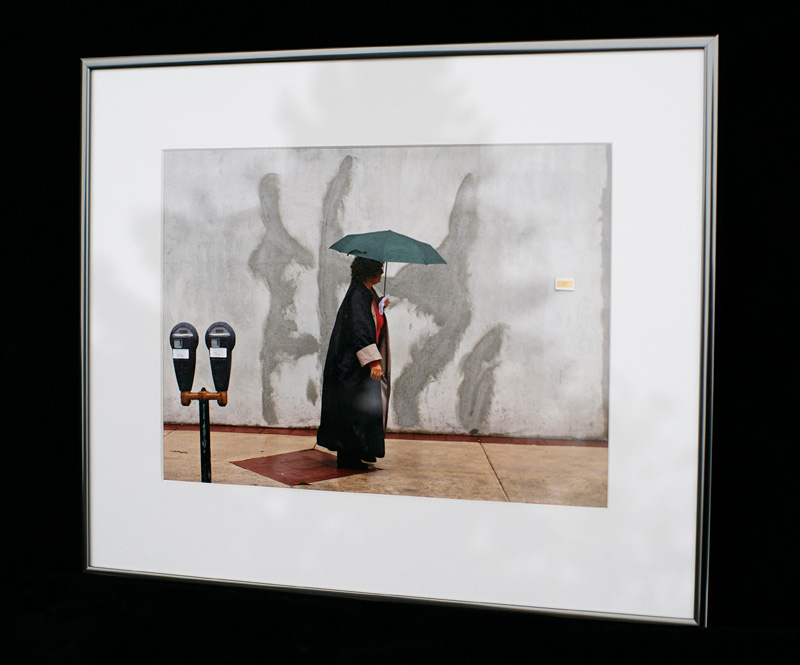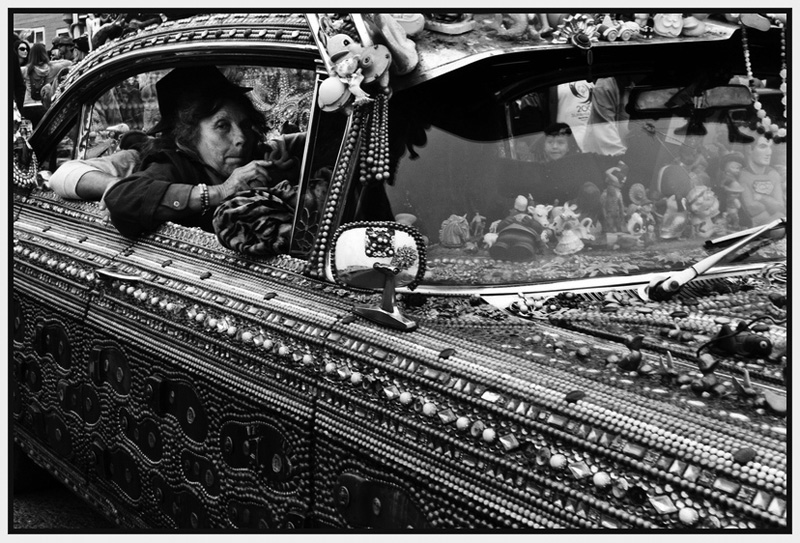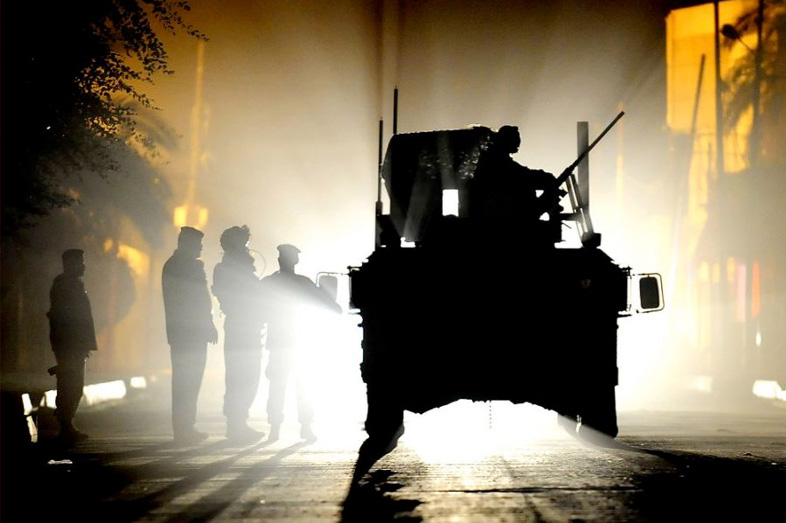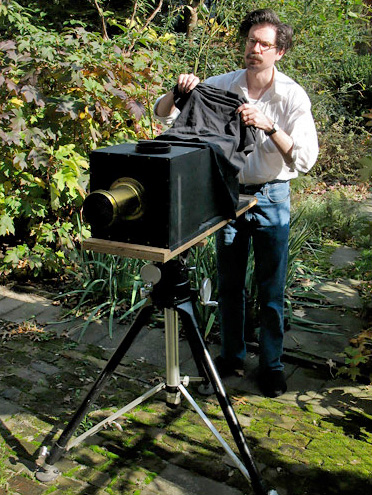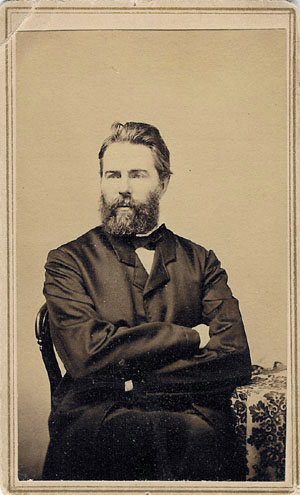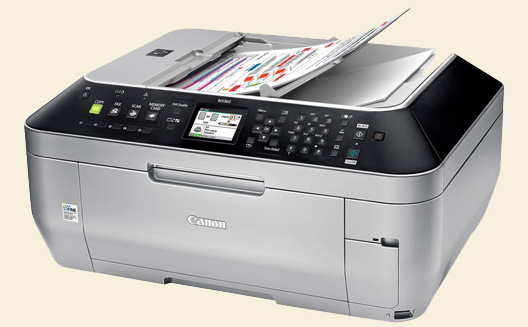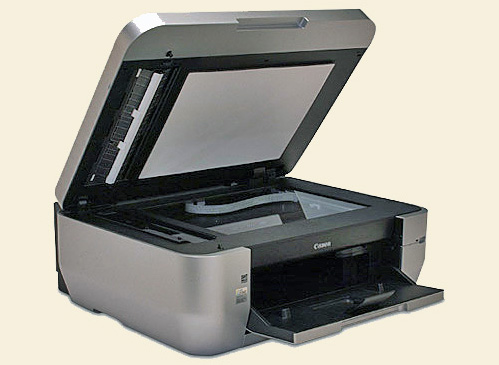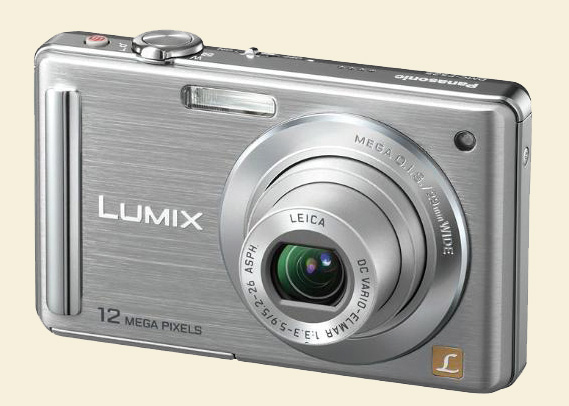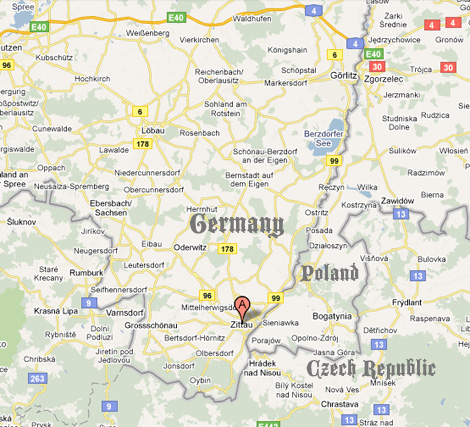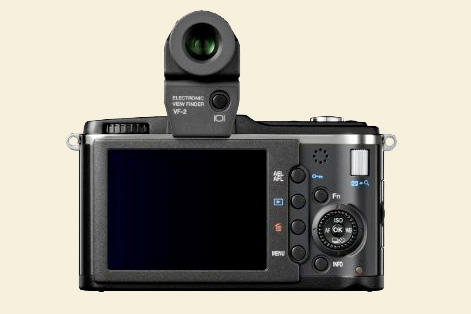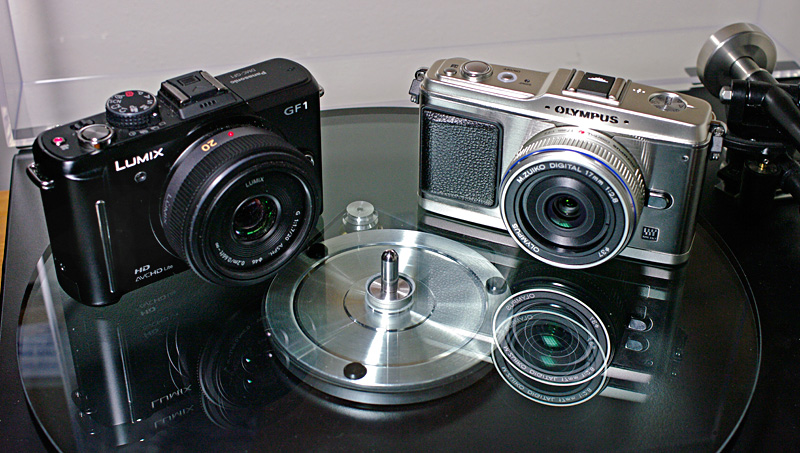-
[UPDATE: You can pre-order the GXR body shell , A12 50mm ƒ/2.5 Macro GR Lens with APS-C 12.3-MP CMOS Sensor
, A12 50mm ƒ/2.5 Macro GR Lens with APS-C 12.3-MP CMOS Sensor , or S10 24–72mm ƒ/2.5–4.4 VC Ricoh Lens with 10-MP CCD Sensor
, or S10 24–72mm ƒ/2.5–4.4 VC Ricoh Lens with 10-MP CCD Sensor at Amazon.com. Amazon has an information page
at Amazon.com. Amazon has an information page about the system too. It will be interesting to see if anyone actually orders one of these today! —MJ]
about the system too. It will be interesting to see if anyone actually orders one of these today! —MJ]
-
Mike: The first thing I thought of when I saw the video about the Ricoh GXR—the link was sent to me by Arnaud Révillon, by the way, so thanks, Arnaud—was "newthink." That refers to an old column of mine written much earlier in the digital era called "Oldthink." "Thinking out of the box" is a cliché and thus firmly inside the box, but the GXR is really an attempt to do something completely different. And I generally like it when manufacturers attempt to re-imagine products.
Ctein: I still don't have the GXR sussed. The question that is still in my head is, "What were they thinking?" I don't mean that snarkily. I'm still trying to figure out the rationale for the camera, because I am sure Ricoh has one: they are not stupid, and they've put a lot of time and money and thought into doing this.
I don't think this is about image quality. Sure, if they announce some exotic modules like a monochrome one or Fovean ones, then they're offering something sufficiently different from the pack that how the photographs look will matter. But the specifications for current modules are sufficiently run-of-the-mill that I assume they will have good (for some value of "good") image quality more or less like their competitors. More than that is pixel-peeping.
I'm still trying to figure out the logic behind the combined lens/sensor module. Sure, it has modest technical advantages. Better dust sealing, but that can be done easily enough with separate modules (e.g., a dark slide that covers the sensor when the lens or body modules are decoupled from the sensor module). In principle Ricoh can closely match lens and sensor characteristics (we don't know that they do), but that only produces modest improvements in quality, and there are other ways to address that, too. Flange thickness? Insignificant. Lens/sensor alignment? Not an issue. Upgradability? This is actually the opposite of upgradability—toss the sensor, toss the lens!
Mike: I wonder, though, if that's not applying oldthink to newthink. Is the purpose of the GXR really to provide an interchangeable-lens camera, or is it a way to own completely separate cameras with the same UI? That is, are we thinking in standard terms of "interchangeable lenses" when what we're really looking at is a customizable point-and-shoot? The problem there is marketability, because they don't want to have to educate the customers as to what they "meant." That never seems to work.Ctein: I'm not sure about marketability, either. Seems to me that for every photographer who'd be excited about a modular camera, there will be two who won't be able to get the sensor/lens combination they want or will be really irritated by what they perceive as unnecessary expense (the expense may not be really there, but look at how many people resent video capability in a camera because they're erroneously convinced it costs them a little bit of money). So why the combo approach? I'm not there yet. Every reason I come up with doesn't quite seem to make sense.
A question for you, Mike: You are preternaturally sensitive to image grain and texture, to the extent that you don't like to mix and match media in the same group of photos and you don't even like to crop (film or digital) in part because of the ways in which it changes that look. In light of that, does this approach bug the heck out of you? Or not?
Mike: Yup, that would be a problem for me. At least if I were using it like a single system camera that's supposed to have different lenses for different purposes. Just the idea of mixing 'n' matching a 1/1.7" sensor and an APS-C sensor would be something that wouldn't appeal to me. I'd be worried about making the look of the pictures match.
This is partly a real concern and partly just obsessiveness. That is, if I can see a difference, then it bugs me. It doesn't matter if most viewers can't tell. So partly it's a real concern and partly it's just me being a nut.
Back to marketability, though: doesn't this concept depend on there being numerous lens/sensor modules so that there's something for everybody? It seems to me it might be a viable product with, say, forty modules, or even with ten, but who's going to buy it when there are two? Pretty much just people who specifically want either a camera with a 10-MP 1/1.7" CCD sensor with a 24–72mm-e lens, or people who want a 12-MP APS-C CMOS sensor and a 50mm-e prime macro lens. In reverse order, that's one largish market, but with lots of competition, and one pretty small market. If Ricoh could access 40 (or 20) small markets in that way, well and good, but two isn't likely to be enough.
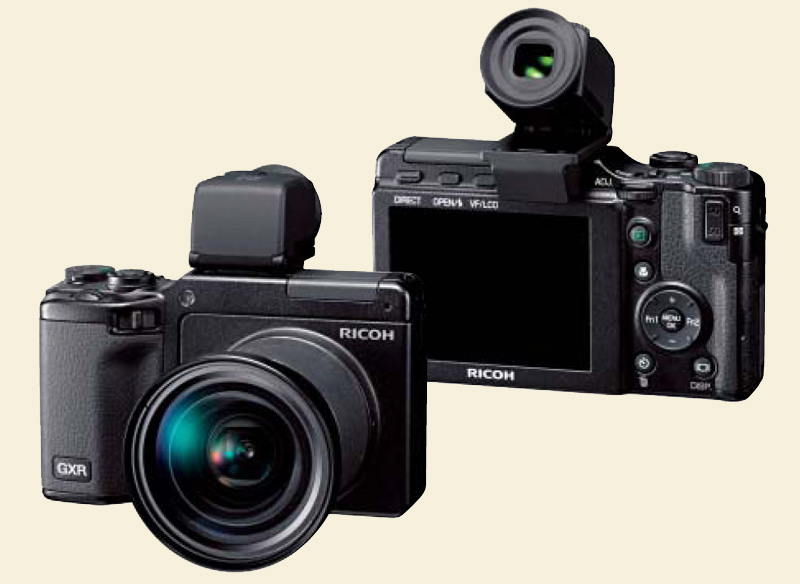 Ctein:
Ctein: Marketability is where my head keeps going, and it's what I have the most troubles with. I think the only way to sell this camera is, as you said, not as an interchangeable-lens camera but as a customizable camera. Which means that Ricoh has to have enough different lens/sensor modules to satisfy enough of the different market preferences.
The only way to make money off of that is if you're in it for the long haul. You have to get the concept across to the consumers who are well-heeled enough to buy a camera in this price range, and that takes a bit of time. Plus, you have to build up enough of a selection of modules that they don't feel deprived. Either/or is the kiss of death, because it draws people's attention to the features that their preferred module doesn't have. The only way that I see that you avoid discouraging customers is if you have enough different options that most any reasonable preference in the combination of features and performance is being met.
But, if you have all those different modules, you have to sell enough of each one to get the economies of scale in production. That takes time and a substantial investment and commitment. If Ricoh is indeed thinking of this as a long-term program that doesn't have to produce short-term returns, then they have more of a chance of succeeding. If, on the other hand this is a program that management, for some reason, is counting on for a quick win, then I fear it's much more likely to be DOA.
Long-term also gives you more of a chance to amortize your R&D costs. If the underlying platform design remains constant through several camera generations, that's a lot less money put into reinventing the wheel.
Mike: If my first thought was "newthink," my next thought was, "that's never going to work." There are a couple of things that struck me about it. First, I'm very good at imagining possible solutions to problems—that is to say, I'm good at "ideation" or idea-generation. And a pocket-sized camera with interchangeable lens-sensor modules is an idea that has never once occurred to me. I'm not saying that I've already thought of every good idea, of course, but, as I always say, I'm just sayin'.
Secondly, I find this camera keeps making me shape-shift back and forth from my camera-reviewer mode to my camera-user-and-consumer mode. As a camera reviewer, I like it—it's new, it's fresh, it has possibilities. As a camera user-and-consumer, it looks like a big headache. You touched in this when you said some photographers "won't be able to get the sensor/lens combination they want." A reader named Charles Hueter put it even better in the comments: "Optimizing sealed modules is a nifty idea," he wrote, "but not for someone who disagrees with the 'marriages' offered." It's those marriages that look ominous to me. As somebody who characteristically is too picky about lenses, and has a hard time finding the right lens for any given camera, the GXR system looks like it would be tailor-made to frustrate. One module would have the perfect sensor, another module would have the perfect lens. And never the twain would meet. A module might have the perfect lens and sensor size but not the right sensor type or pixel count. With more fixed variables, you increase the likelihood of frustrating people who know in advance what they want.
For instance, I responded positively in the comments when somebody mentioned the possibility of a B&W module. I said "I'd buy that." But then I thought, what if the only B&W sensor module had a 100mm-e lens? I wouldn't buy that. What if it had a 35mm-e lens but a 1/2.5" sensor? I wouldn't buy that, either. They've have to get everything right for me to get me to lay real money down, and the chances of that happening are probably slim to none.
And a third idea I wanted to throw at you: Do you think competition is necessary to make a product category work? Canon pushes Nikon and Nikon pushes Canon. On the other hand, Foveon has languished, relatively speaking, despite having some very nice qualities and despite making a lot of sense. (Bayer arrays are pretty inelegant, sort of the modern equivalent of tri-color cameras.) Could it be that that's because it's a hermetic product, limited to one company? Another commenter mentioned the Wankel engine, and I thought of the Walsh driver—two good ideas that seemed to go nowhere because one company hoarded the rights. If two or more companies were making Foveon sensors, would it have taken off by now? Would development, on the one hand, and acceptance on the other, have moved faster? I'm well aware that one of the points that interests people about the Micro 4/3 system is that you can mount many different kinds of lenses on it, using adapters. I've never been a fan of that solution myself, but that flexibility is important to people. People like the idea. Would Ricoh's idea stand a better chance if other companies could make modules for the body or bodies for the modules?
Ctein: There are two important questions that I don't know the answers to. The first is whether there are economic savings to this modular approach that I'm entirely missing. If there are major savings I haven't taken into account, then the whole risk analysis goes out the window.
If there aren't, the big question I'm left with is whether this is truly a strategic move on Ricoh's part? Because if there aren't immediate major economic savings, then this doesn't look like a short-term economic winner to me. But...it's possible that Ricoh has done truly brilliant marketing research and the two modules that they're starting with are exactly what enough of the market wants to make these cameras immediate successes. My gut feeling says, "no"...but if my gut were all that trustable, I'd be rich.
I don't have a feeling that competition has much to do with it. Or, if it does, the cart and the horse belong in a different order. I think most one-company technologies are one-company technologies because they're not honestly interesting enough to develop competition. I don't recall that Foveon was in any way restricted to dealing with Sigma alone. They couldn't drum up other interests. (And, by the way, I agree with you that full-color integrated pixels are a lot more elegant than Bayer arrays.)
So, one "tell" might be whether we see other companies introducing modular systems in the next couple of years, whether they're compatible with Ricoh or not.
Technologically, I can see all sorts of cool things that could be done with this modular configuration; many readers have already commented about that. I don't actually think that's very relevant to our discussion. Absent a long term strategic commitment, the system won't be around long enough nor get enough capital invested in it for the cool stuff to happen.
Mike: In any event, it's going to be a lot of fun to watch, wait, and see! Thanks Ctein.Ctein: Thanks back at ya! One closing thought occurs to me. We're pretty good at coming up with plausible mental models for manufacturers' efforts (plausible does not equal correct, of course). A product idea that the two of us can't get a good handle on is, for that reason alone, an interesting idea.
Send this post to a friend
-
Featured Comment by Mitch Alland: "Many people are reacting to the 'waste' of the GXR sensor/lens module concept in that, when upgrading to a new sensor, the lens cannot be kept. The Ricoh website has a 14-page brochure [PDF download] on the GXR that explains the rationale for the closed sensor/lens module. Page 4 of the brochure states (in marketing-speak):
Compact, high-performance lens design at a level only possible
with the interchangeable unit system
: It is the lens that gives life to the photograph. In interchangeable lens
camera systems up to now, the distance from the mount and the back of the
lens to the sensor image plane was subject to requirements for flange back
distance and back focal length. This made it difficult to achieve both
compactness and high optical performance.
Eliminating the lens mount, however, means that the back focal length can
be freely defined for the GXR, enabling it to use the most optically
efficient lens designs with the minimum size. In addition, combining the
lens and image sensor increases design flexibility so camera units can be
developed based on a variety of concepts. This practical inspiration has
given birth to a totally new camera system with portability, high image
quality and superb expandability and growth potential as a system.
"Thus, it seems to me, that once there is a new sensor, that there will be changes in the lens, as the sensor/lens combination is optimized. That will mitigate the "waste" of getting rid go both the lens and sensor when upgrading.
"There are at least three major advantages of having the sensor and lens in one module, which, as this really is a new paradigm for digital cameras, I'll summarize here once again:
1. Elimination of the sensor dust problem that comes from changing lenses.
2. Providing the user with the same interface for widely different lens/sensor combinations, which is a great plus because switching between different digital cameras can be confusing: not like switching between two film cameras, like a Leica M and a Nikon F, for example. So, now, one will be able to use different camera formats, while maintaining the same user interface.
3. Optimizing the lens and sensor combination for each lens.
"The price issue raised by many people seems to me to en overblown: for some people the advantages of this revolutionary—yes, it is revolutionary—system will be worth a higher price, for others it will not.
"The success of the GXR will also be determined by how it's implemented: if the various sensor/lens modules do some things very well, and appeal to a market segment in sufficient quantity, the camera system will be successful—the market will decide.
"In my view, the GXR will eventually provide, in one camera system, several different formats in terms of sensor size and type, as well as lens type, something for which, otherwise, the user would have to purchase different digital cameras with various lenses, all of which would operate in different ways. In contrast, the GRX will provide one user interface for these various formats and lens types, which is something that I think is highly desirable. And this will be done on the basis of the Ricoh user interface, which is among the best available and on the basis of Ricoh lenses, which are excellent. It seems to me that people that are fixated on price are not recognizing, or don't need, the revolutionary aspects of the GXR system, which, indeed, is not a system designed for the mass market."
Featured Comment by Puplet: "It goes like this: digital Ricoh owners have this odd habit of spending huge amounts of money on accessories for their cameras. The GRX makes the number of accessories that could be developed near-infinite. All Ricoh has to do to suck you in is develop one easy-to-build (relative to an entire camera) lens-sensor unit that no one else offers in a portable form, and then you'll end up buying a few more, in the idle hours of the night. I'd get a dedicated monochrome APS-C sensor if it had Ricoh 28mm GR lens (of GR1 fame) in front of it. Then, if they ever made wide-angle and telephoto options, I'd probably want those too. The GRX doesn't need to be marketed at all—if you're a nut, it sort of sells itself...."
Mike adds: Andreas made a very good point in his comment, which was that if Ricoh had just come out with a 50mm-e APS-C compact with the excellent performance this one evidently has (judging from the dpreview.com samples), for $621 less than the upcoming Leica X1, we would all be praising it...but the fact that it's part of a modular system is completely obscuring that point.
